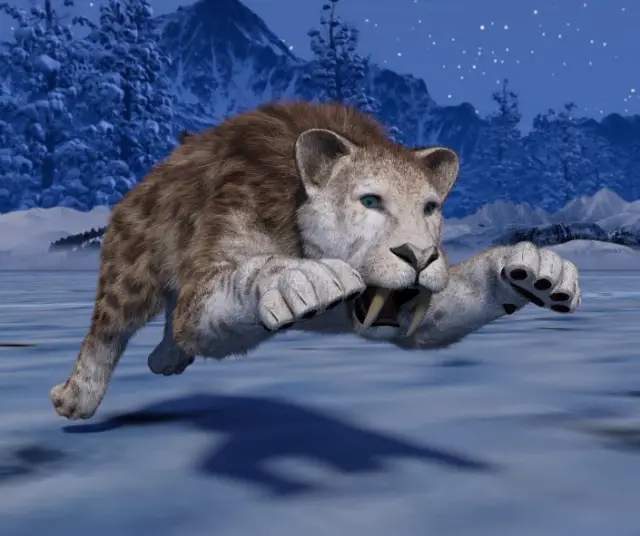In the vast arena of the history of life on Earth, few creatures evoke as much intrigue and wonder as sabertooths. These impressive prehistoric predators, with their long, curved tusks, have left an indelible mark on the world of paleontology and the popular imagination. We'll delve into the world of the sabertooth, exploring its history, distinctive anatomy, and predatory lifestyle, and discovering how these creatures have become iconic symbols of the distant past.
Origins and Evolution
Sabretooths are in the family Felidae, but their true scientific name is Machairodontinae . These saber-toothed cats evolved approximately 42 million years ago in the Eocene and became extinct around 11,000 years ago at the end of the Pleistocene. During that time, several species of sabertooth arose, each adapted to different environments and prey.
The most distinctive feature of the sabertooth is its long, curved tusks, which can reach up to 30 centimeters in length in some species. These fangs, however, were not simply intimidating weapons, but highly specialized hunting tools. Sabretooths also featured stocky bodies, strong legs, and sharp claws, characteristics that made them formidable predators.
Sabretooths were highly efficient predators and are thought to have hunted large game, such as mammoths and bison . Their hunting technique involved ambushing their prey and using their fangs to pierce vital areas, such as the throat or neck, ensuring a lethal wound. Once the prey was incapacitated, sabertooths would use their powerful jaws and claws to tear through the flesh and feed.
Saber Tooth Species
Among the best-known species of saber-tooth is the iconic Smilodon, which includes Smilodon fatalis and Smilodon populator. These cats were large and robust, with distinctive fangs and a wide geographic range. Other prominent species include the Homotherium and the Megantereon, each with unique anatomical adaptations that set them apart from Smilodon .
Extinction and Probable Causes
The disappearance of sabertooths is a mystery that has long puzzled scientists. Although an exact cause cannot be pinpointed, several theories have emerged to explain their extinction. Climate changes , competition with other predators, and prey declines are factors that have been proposed as possible causes. In addition, the disappearance of large herbivorous mammals, which were their main sources of food, may also have influenced their fate.
Although the sabertooth is long extinct, its image and legacy live on in popular culture. They have appeared in movies, TV shows, books, and video games, where they are depicted as iconic and fearsome creatures from the prehistoric era. His figure has captivated the imagination of people, and they have become true icons of antiquity.
Though their reign has come to an end, the sabertooths remain a vivid reminder of the diversity and greatness that once existed on our planet. His legacy lives on in science, popular culture, and our collective imagination.
